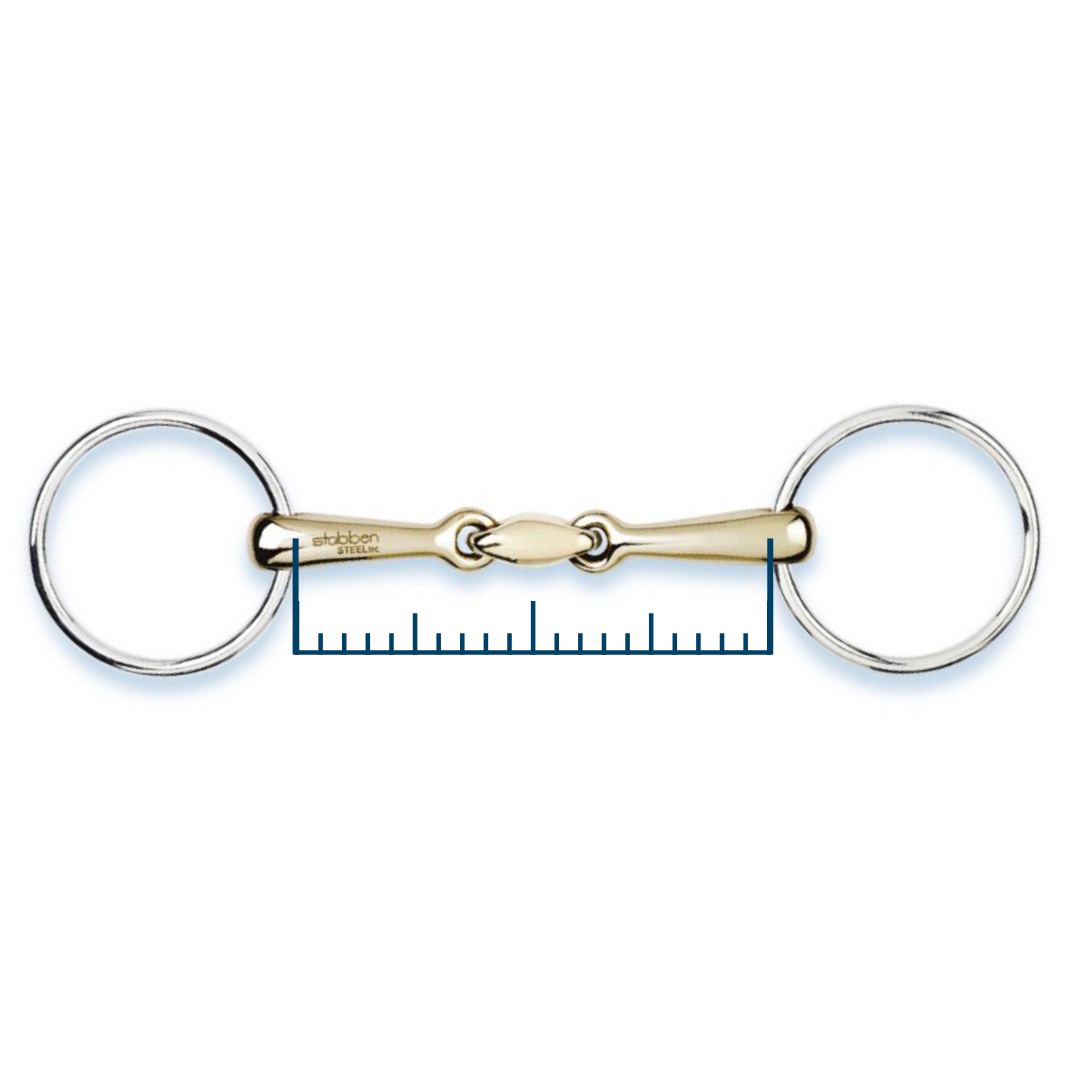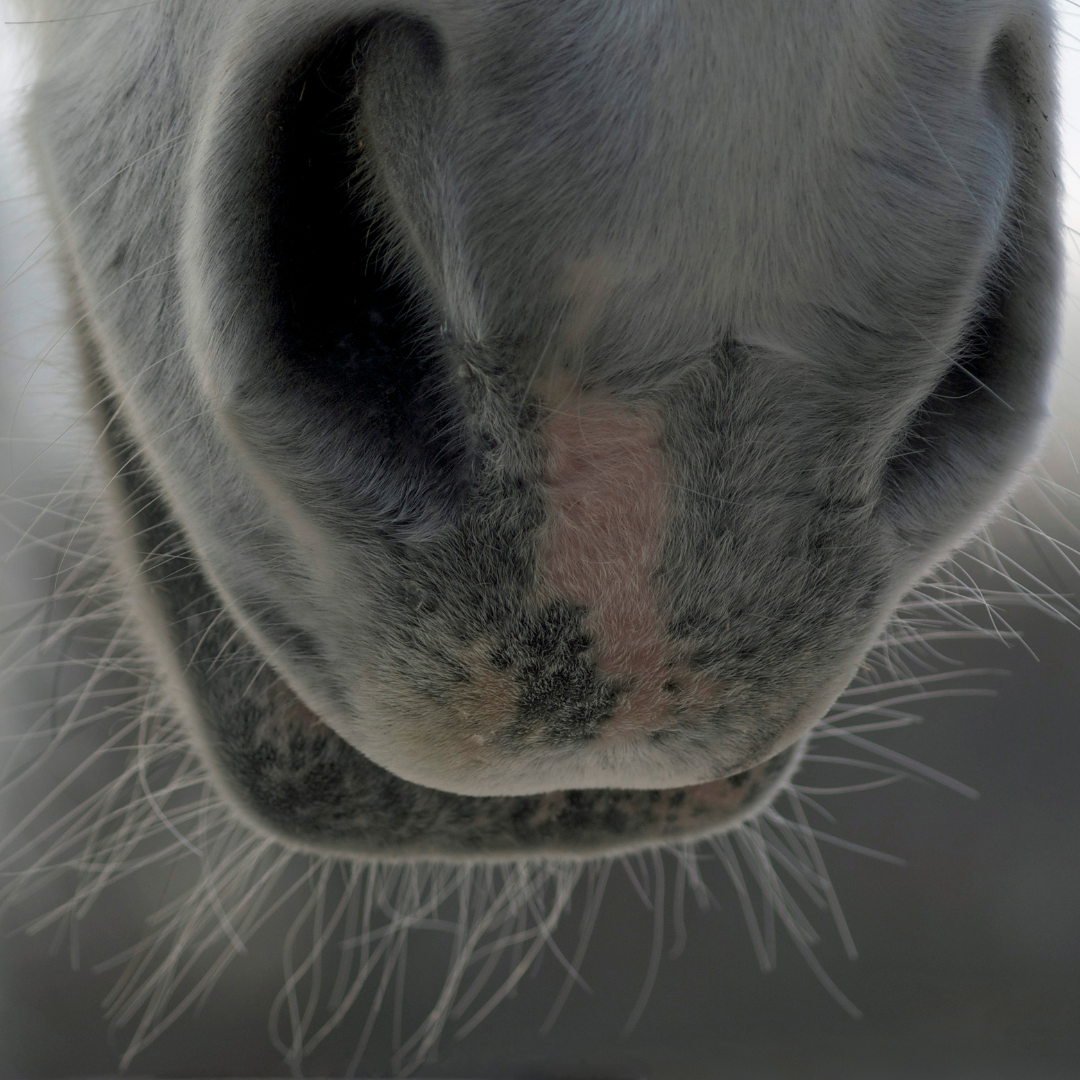
Why is the right size so important?
The correct size of a bit is essential for the horse's well-being. If the bit is too small, it can cause uncomfortable rubbing at the corners of the mouth. A bit that is too large can quickly create painful pressure points, lead to imprecise control, and become unstable.
The size to choose depends on the type of side-/cheekpiece selected: Bits with loose rings (see illustration) should always have some space between the corners of the mouth and the bit ring to prevent pinching. Fixed cheekpieces, such as eggbutt, D-ring, or full cheek snaffles, should fit more snugly.
How do I measure a bit correctly?
The bit width is the length of the mouthpiece between the sidepieces.


How do I measure my horse's mouth width?
There are several approaches to determine the correct bit size for your horse:
-
Try out different bits you already have by fitting them to your horse. If the size of the bit is unknown, you can easily measure it as described above. A bit with loose rings has the right size if there is about 0.5 cm of space between the sidepiece and the corner of the mouth. A bit with fixed sidepieces should fit snugly against the corner of the mouth.
-
Take an old lead rope, a garden hose, a straw cord, or another soft material without sharp edges and cut about 20 cm. You will also need a pen to mark this material. Tie a knot at one end of one side and place the piece in your horse's mouth like a bit. The knot should lie on one side, and on the other side, you mark the material directly next to the corner of the mouth with the pen.
Now measure the marked length. However, this method is somewhat less accurate than using existing bits.
What bit thickness does my horse need?
The bit thickness largely depends on how much space the horse has in its mouth. If a bit is very thin, the pressure becomes more concentrated, making the bit sharper. On the other hand, if it is too thick, it can put pressure on the horse's sensitive palate.
For those who want to be absolutely sure, it's a good idea to ask the equine dentist during their next visit. To make your own assessment, you can use the "two-finger method":
Place two fingers (index and middle finger) in the horse's mouth where the bit sits. The horse will start to chew. If you feel pressure on both fingers with the mouth closed, a bit thickness of 14-16mm is sufficient. If you feel little pressure, you can choose a thickness of 16-18mm.


Lose Ringe
... should be fittet with 0,5cm on both sides to the corners of the mouth.

Olivenkopf
... should rest lightly against the corner of the mouth and provide gentle lateral stability.

D-Ring
... should rest lightly against the corner of the mouth and provide lateral stability.

Full Cheek
... should rest lightly against the corners of the mouth and provide good lateral stability and guidance.
.png?width=592&height=213&name=logo%20(1).png)
